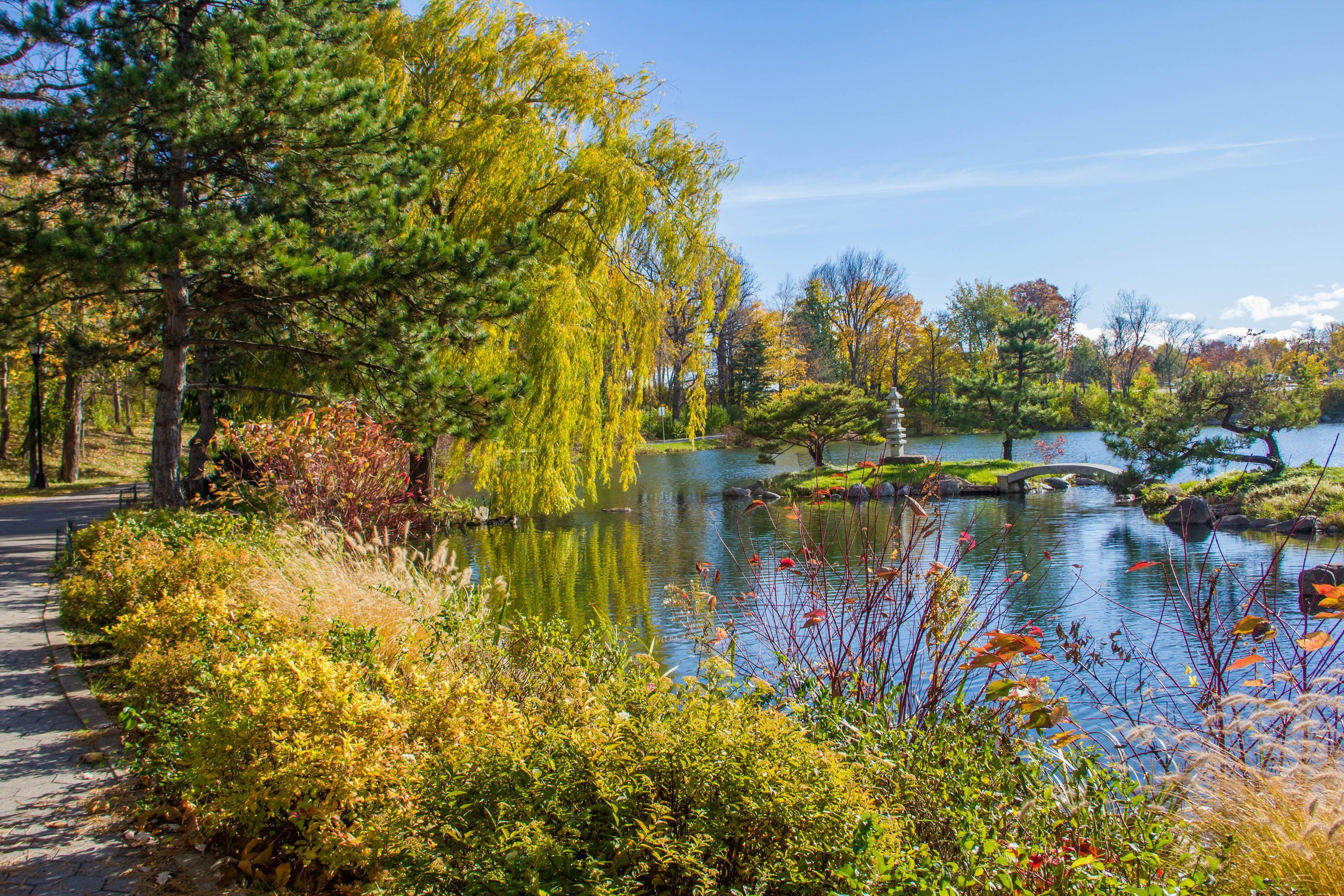Olmsted Landscapes Across New York
If you think of Frederick Law Olmsted, you probably think of Central Park. But there is more to FLO in New York if you know where to look! Photo credit: aerial view of Central Park’s Sheep Meadow with the city skyline in the background. Courtesy of Central Park Conservancy.
Central Park might be the most famous example of a Frederick Law Olmsted landscape, but you can find Olmsted-designed parks across New York State. No matter where you are, you probably aren’t too far from an Olmsted park — especially considering the extended legacy of the Olmsted Brothers company and the many landscapes they designed following in their father’s footsteps. As we continue to celebrate the founder of American landscape architecture throughout his bicentennial year, here are just a few highlights of Olmsted’s living legacy around New York.
Rochester’s City Park System: Genesee Valley Park, Highland Park, Seneca Park, and Maplewood Park
From Highland Park Conservancy: Lilac time has been celebrated in Rochester since 1905. Today, the celebration has grown into a 10-day Lilac Festival in May. The Park's 22-acre display, containing approximately 1,200 shrubs representing more than 500 varieties, is found primarily along Highland Avenue.
Rochester is one of a handful of American cities that have a park system designed by Frederick Law Olmsted. Each park has its own unique characteristics based off the existing terrain, but relate and connect to each other, forming an “Emerald Necklace” through Rochester. The League has worked with the parks in many ways over the years, including through our grant programs and most recently including Genesee Valley Park on our Seven to Save list.
Prospect Park, Brooklyn
Park-goers enjoying a summer day in Prospect Park. Photo by Jordan Rathkopf
Like Central Park, Prospect Park was a collaboration between Olmsted and Calvert Vaux, with whom he designed many of his most famous landscapes. Affectionately referred to as “Brooklyn’s backyard,” Prospect Park opened in 1867. The 585-acre oasis is stewarded by the Prospect Park Alliance in partnership with the City of New York.
Bayard Cutting Arboretum State Park, Long Island
Two people sit on a bench with their backs to the camera in front of an expansive green landscape at Bayard Cutting Arboretum. photo via Bayard Cutting Arboretum on Facebook
This a 691-acre state park on Long Island was formerly a private residence. The Bayard Cutting Arboretum was donated to the Long Island State Park Region by Mrs. William Bayard Cutting and her daughter, Mrs. Olivia James, in memory of William Bayard Cutting, “to provide an oasis of beauty and quiet for the pleasure, rest, and refreshment of those who delight in outdoor beauty; and to bring about a greater appreciation and understanding of the value and importance of informal planting.” The park’s arboretum was designed by Frederick Law Olmsted in 1886.
Buffalo’s City Park System
The Japanese Garden in Buffalo’s Delaware Park. Photo by Zhi Ting Phua
From the Buffalo Olmsted Parks Conservancy: “The Buffalo Olmsted Park System is composed of six parks, seven parkways, eight landscaped circles and several smaller spaces. The original concept for the tree-lined parkways and avenues was to link the six main parks and integrate the park system with the city. These parkways were designed to allow visitors to travel from one park to another without leaving the serenity of these green spaces. Olmsted wanted these areas to be “more park-like than town-like,” an effect he most certainly achieved. In 1876, Olmsted proclaimed Buffalo to be “the best planned city … in the United States, if not the world.” Today our city retains its remarkable urban fabric thanks to the vision of this extraordinary man, as well as the support of thousands of Buffalonians and friends who enjoy the parks every day.”
Downing Park, Newburgh
A photo with a view across the pond in Downing Park. The pond features a small fountain and a line of trees along the shore. The 1934-Shelter House can be see in the background. photo in the public domain via Wikimedia Commons
The 35-acre Downing Park opened in the heart of the City of Newburgh in 1897. A collaborative effort by Frederick Law Olmsted and his longtime collaborator Calvert Vaux, Downing Park was named after Newburgh's native son Andrew Jackson Downing, eminent horticulturist and pioneer of the public park movement. According to the park’s website, “Downing Park was the last collaborative effort by Olmsted and Vaux — as well as the only project that included both their sons, John Olmsted and Downing Vaux.”
Niagara Falls State Park
A view of Niagara Falls from Luna Island. Photo via Niagara Falls State Park USA on Facebook
The oldest State Park in the country, Niagara Falls and the surrounding landscape was primarily controlled by private interests up until the mid-1880s. Frederick Law Olmsted was an early champion of making the Falls more easily accessible to the public. Along with a group of concerned citizens who first began advocating for their preservation in the 1860s, the Niagara Falls Association was formed in 1883 to lobby New York State to acquire and protect the falls from private exploitation. They were successful in their efforts and Olmsted went on to design the park’s landscape.








